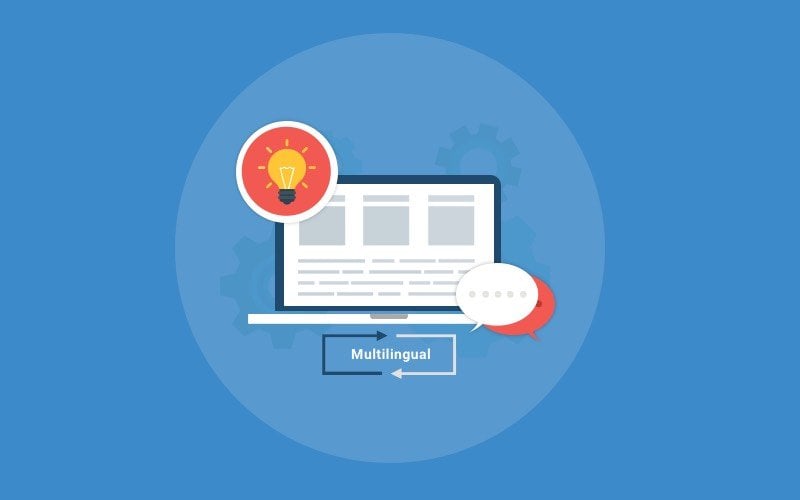
Suppose you are facing an issue with your credit card and want an urgent solution.
Would you walk up to the bank, call customer care to wait for hours, or email their support team only to get a response two days later?
The answer is clearly a No!
You would rather expect to find an instant solution somewhere in the bank’s mobile app or website.
That’s exactly what every customer wants today – easier and faster wins!
No wonder a self-service help center is witnessing a surge in demand due to the unparalleled flexibility and convenience it provides. It is a centralized platform with a collection of how-to articles and guides, FAQs, and video tutorials that can be accessed instantly across devices.
In this blog, we will discuss the benefits of a customer self-service portal and explore its components. We will also learn the steps to create a powerful portal and look at some tools that can help you in the process.
Let’s go!
What Is a Customer Self-Service Portal?
A customer self-service portal is a one-stop platform where customers can find everything they need in a few clicks. From FAQs and how-to articles to video tutorials and step-by-step guides, this portal equips customers with all the necessary information to solve problems on their own. With well-structured and interlinked articles, a self-help platform is easy to navigate and serves up relevant answers to the questions asked.
Notable Benefits of a Customer Self-Service Portal
A customer self-service platform gives customers what they need the most from brands – convenience. The convenience of getting their problems solved anytime and from anywhere they are translates into a memorable experience that further improves customer satisfaction and loyalty.
Let’s explore the numerous benefits that customer self-service portals bring to the table.
1. Keep Your Tickets Down & Customer Satisfaction High
A self-service portal for customers can significantly reduce the volume of support tickets flowing to your help desk. That’s because the portal takes care of most of the common problems customers encounter. While this keeps the tickets on the lower end, customer satisfaction gets a substantial boost.
2. Reduce the Workload of Support Agents
Customer support agents have a lot on their plate every day. With customers becoming independent problem solvers, agents can utilize their time to solve complex issues that the portal cannot handle. They are relieved from repeatedly answering the same old questions and can instead invest their time in business-critical matters.
3. Bring Down Issue Resolution Time
As the ticket volume reduces, there are fewer calls to attend and emails to respond. Customers who genuinely need an agent’s assistance will not have to wait hours for a 2-minute conversation. Employing a self-service portal reduces the wait time, allowing customers to connect with your support staff and get their issues addressed immediately.
4. Foster a Positive Brand Image
Customers are bound to get frustrated if they feel all confused and overwhelmed while using your product. It doesn’t take much time for frustration to grow stronger, forcing customers to vent out on social media platforms. Employing a self-service portal prevents simple issues from spiraling into brand-damaging negative reviews. With minimal effort, customers can solve problems, which translates into beautiful experiences and improved brand image.
Besides, there are a few other benefits that companies have experienced by employing self-service, as shown in the image below.

Essential Components of a Customer Self-Service Portal
There are several components that work collectively to make a self-service help center a success. Let’s look at each of these components in detail.
1. How-to Articles & Guides
Customers visit your portal not just to be greeted with surface-level information but to develop an in-depth understanding of your products and services. That’s where step-by-step guides and how-to articles come into the picture. A collection of detailed articles covering all aspects of your products leaves no room for confusion. There is more clarity around how to make the most of your products and overcome challenges coming along the way.
2. Video Tutorials
Sometimes for some complex concepts, videos are the best way to educate customers. Videos give a visual demonstration of how to use your products, troubleshoot problems, and complete certain tasks. Supplementing written articles with videos makes for an engaging self-service experience that allows customers to grasp the information quickly.
3. FAQs
FAQs need no introduction. They have been around for quite some time and are considered the easiest form of self-service. By incorporating FAQs in your self-help platform, you can give customers instant and accurate answers to specific questions. Simple questions about how to install a product, how to initiate a refund, or how to cancel an order can be covered in your FAQ section.
4. Blazing-Fast Search
Search is a crucial component of a self-service customer support portal. A prominent search bar placed right at the center, delivering relevant article suggestions to customers’ questions, takes the overall customer experience to a whole new level. The stronger the search, the lesser the resolution time and higher the customer satisfaction.
5. Ticket Forms
For a holistic customer support experience, you should provide customers with the convenience of raising tickets right from within the portal. Adding ticket forms is a great way to help customers submit tickets for issues that the self-help platform cannot address. It allows them to describe their problems in detail without taking the pain of calling or emailing your support staff.
6. Answer Bot
By serving up quick answers to customer questions, an AI-powered answer bot takes the entire self-service experience several notches higher. Customers do not have to scour every page of the help center to get what they need. They can simply ask the bot, and the answer will be right on their screen in seconds.
7. Feedback Forms
Another essential element of a self-service portal is a feedback form. You can add feedback forms at the end of every article to capture customer feedback. These are simple Yes/No forms with a simple question like – Was this information helpful? Customers also get the option to expand on their feedback right inside these forms.
8. Online Community
There is no one who can understand customers’ pain points better than fellow customers who have used your product and are abreast with the challenges it can throw. Incorporating an online community forum allows customers to discuss problems and learn from each other’s experiences. With peer-to-peer support, customers get the best guidance directly from people who know your product in and out.
How to Create a Customer Self-Service Portal
Now that you have learned about the importance of customer self-service portals and their essential components, it’s time to understand the steps that go into creating this platform.
Step 1: Get Into the Heads of Your Customers
Creating a customer self-service portal requires more than just wearing the customer’s hat. You need to get into the heads of your customers and dig deep into what they really need.
Your help center should be a comprehensive platform that covers all aspects of your product and provides quick fixes to the common challenges customers face.
Customer-facing teams like sales and support can give you unparalleled insights into customers’ likes and dislikes, preferences, and expectations.
Connect with them to identify those frustrating pain points and roadblocks that cause customers to raise tickets. Go through previous conversations conducted over email and phone to analyze the areas festering customer frustration.
Doing these simple things right will bring forth the burning customer issues that must be covered in your self-service portal.
Step 2: Identify the Resources to be Included in Your Self-Help Platform
Once you gain a hold over your customers’ pain points, the next ideal step should be to identify the content that should go into the portal.
For example, FAQs can work wonders when customers need short answers to specific questions, such as:
- How to sign-up for my account
- How to initiate the order cancellation process
- How to return a product, etc.
For detailed solutions, how-to articles and guides work best. If you are a software company, your help center can have comprehensive articles on topics such as:
- Getting started with the software
- How to customize XYZ (help desk, live chat, or any other tool)
- How to integrate X with Y
In addition to FAQs and how-to guides, you can also add video tutorials, customer case studies, and white papers to ensure your help center is well-researched.
Step 3: Build a Robust Structure for Your Portal
How your portal looks and feels to customers is as important as the content it contains.
Just as a building with a weak foundation is easy to collapse, a portal can fall apart if it is not carefully structured.
To set a strong foundation for your help center, here are a bunch of things you must take care of:
- Build an appealing home page displaying the key topics that the help center covers
- Categorize all information into broad topics and sub-topics
- Use a blend of written text, images, and videos for an immersive self-service experience
- Place your search bar right at the top so customers can look for information quickly
- Interlink relevant articles to help customers reach the right article in a few clicks
Customers come to your help center to find a solution to all the chaos they are facing. A simple, neat, and meticulously-organized platform will feel like an instant relief!
Step 4: Blend Your Help Center With Your Company’s Branding
There is no point in creating a help center if customers cannot connect with it at a deeper level.
A support portal should hit the right chords with customers and give customers a sense of familiarity the moment they step in.
Customizing your self-help platform with colors, designs, and themes that blend well with your brand is, therefore important. Your help center should look and feel like a true extension of your brand, reflecting the same values that your company stands for.
Consistency is crucial when it comes to branding as it builds trust in customers and gives them a feeling that they are interacting directly with your business.
Besides the design elements, you can also set a custom domain to give your help center a unique identity and tailor it completely, down to the bare bones.
The best knowledge base software, like ProProfs, offers plenty of themes, designs, and handcrafted templates to choose from. Here’s a quick video on how you can customize your help center using such tools.
Step 5: Elevate Help Center Online Visibility Through Search Engine Optimization
How will customers use your help center for issue resolution if they can’t find it in the first place?
Amplifying the online visibility of your help center is crucial to achieving top-of-the-mind brand recall. That’s where SEO comes into the picture.
Search engine optimization aids in boosting the online presence of your self-service support, allowing customers to discover help quickly on Google.
So, what should you do to ace the SEO game?
Doing SEO right is a little tricky, given that every online business today is toiling to win Google and keep pace with its changing algorithms.
While everyone follows the time-tested strategies of using relevant keywords at the right places, interlinking articles, and designing thoughtful metadata, what most of us forget is the importance Google gives to the quality of content.
Nothing can beat the impact of well-researched, expert-backed, and authoritative content. By creating quality content, you can grab eyeballs faster and win unbeatable credibility in the market.
Modern self-service software are well-equipped with SEO functionalities, so creating a help center that is optimized for Google is literally a no-brainer. You can simply turn on SEO, add the required information, and you are good!
Step 6: Allow Customers to Raise Tickets Right From Your Portal
Customers expect a holistic, 360° experience from brands.
Traveling from a self-service portal to a separate ticketing platform for a simple issue is sure to make matters even worse.
You can prevent this by incorporating a ticketing system right into your self-service platform. That means even if the portal fails to address an issue, customers can seek agent assistance by raising a ticket instantly.
Ticket forms can be embedded anywhere on your help site. When the need arises, customers can fill in the details and describe the problem. The tickets are automatically transferred to your help desk, where agents can collaboratively resolve them.
Adding ticket forms is a great way to improve first-contact resolution and make sure customers don’t leave your portal disappointed.
Step7: Keep Your Help Center Up to Date & Relevant
Online customer self-service should not be static. It should keep evolving as customer needs change, products develop, and businesses expand.
Imagine a customer visiting your portal and finding outdated information. The customer then goes back to the same route – calls, and emails – to get the help they need. And your support process remains stuck in the same vicious cycle!
For your self-service portal to be truly successful, it should be replenished with new information, article updates, and improvements at regular intervals.
A self-help platform is not set in stone. Maintaining it is a continuous process, requiring close analysis of what’s working and what’s not for your customers.
Some of the leading customer portal software offer built-in reports with comprehensive insights into your best and worst-performing content failed and successful searches, and a lot more. Harnessing these insights can open a world of opportunities to enhance the quality of your self-service platform.
Here’s a quick video on how you can measure reports.
Top Customer Self-Service Portal Software
Along with the above-mentioned steps, you also need the support of the right tool for your knowledge base to take off successfully.
Let’s look at the four leading knowledge base tools you can consider:
1. ProProfs Knowledge Base

ProProfs Knowledge Base can be set up in minutes without any specialized training or coding knowledge. It is a simple tool rich in stellar features for all stages of content development, right from authoring and customizing to publishing. Using ProProfs, you can build an online help center with pre-designed templates, set a custom workflow for content review, and publish across the web and mobile platforms.
Pricing: Starts from $49/author/month
2. Zendesk Guide

Zendesk Guide is a popular tool that helps you build a smart help center for your customers as well as agents. With an array of customization themes and multiple language support, you can tailor your help center just the way you want. You can take the self-service experience one notch higher by embedding the self-help portal right inside your product or website using a widget.
Pricing: Starts from $49/agent/month
3. Zoho Knowledge Base

Zoho knowledge base software is another worthwhile option you can consider. Trusted by global brands, this tool helps you build a multi-brand help center for all the brands you support. Using its advanced customization capabilities, you can build a help center that blends well with your branding. Zoho also allows you to create an online forum or community for customers to discuss challenges and find quick solutions.
Pricing: Starts from $9.70/user/month
4. HubSpot

HubSpot offers knowledge base software as part of its customer support suite. Using this tool, you can create a library of help articles and pack them in a knowledge base. Content can be easily organized and previewed across devices. The tool also offers a built-in reporting system that helps you identify gaps, assess article performance, and turn your help center into a useful information resource.
Pricing: Starts from $45/month
How to Choose the Right Customer Self-Service Portal Software
The online market is replete with a plethora of knowledge base tools, like the ones mentioned above, portraying a promising picture of excellent performance. However, not every tool is a perfect fit for you, and not every tool comes with all the customer self-service portal features you desire.
So, what exactly should you look for while choosing a customer self-service tool?
Let’s find out.
1. Ready-to-use templates:
With expert-designed templates, you can get off to a great start quickly. Templates provide a ready-made structure so you can forget the format and rather focus on creating compelling content.
2. Rich Authoring:
The tool should offer a complete authoring system, including an editor, customization options, and an easy publishing system.
3. Built-in Reports:
Opt for a tool that is equipped with a built-in reporting system. Using reports, you can unlock crucial insights into how your help center is performing and what needs to be improved.
4. Third-Party Integrations:
External integrations are essential as they help you connect the customer portal with numerous chat, ticketing, analytics, and several other tools, to enhance performance.
5. SEO-Friendly:
The tool you choose should help you build a search engine-optimized help center for increased online visibility and traffic.
Power Your Customer Support With a Self-Service Portal
With customers becoming more aware and empowered, businesses have to keep pace with their changing needs. Failure to do so can be fatal, with your loyal and hard-earned customers switching to your competitors in the hope of superior services.
Creating a self-service portal is one of the easiest ways to achieve improved customer satisfaction, higher retention, and by that extension, a positive brand image.
Following a step-by-step process always helps when building a self-help platform. Start by understanding what your customers need, identifying the resources to be included in your portal, and then giving it a proper structure. Once your portal is ready to be rolled out, ensure that it is thoroughly reviewed by subject matter experts.
The support of a solid knowledge base tool will further amplify your efforts, bringing your self-service platform to life in no time.
While a self-service portal is great to have, do not assume that it will immediately fix all customer problems. It takes time and constant data-driven improvements to promote self-service and take it to a level where customers find it indispensable.
Do you want a free Knowledge Base?
We have the #1 Online Knowledge Base Software for instant self-help







